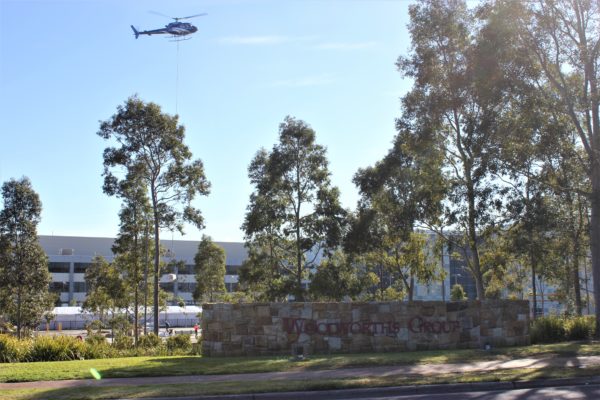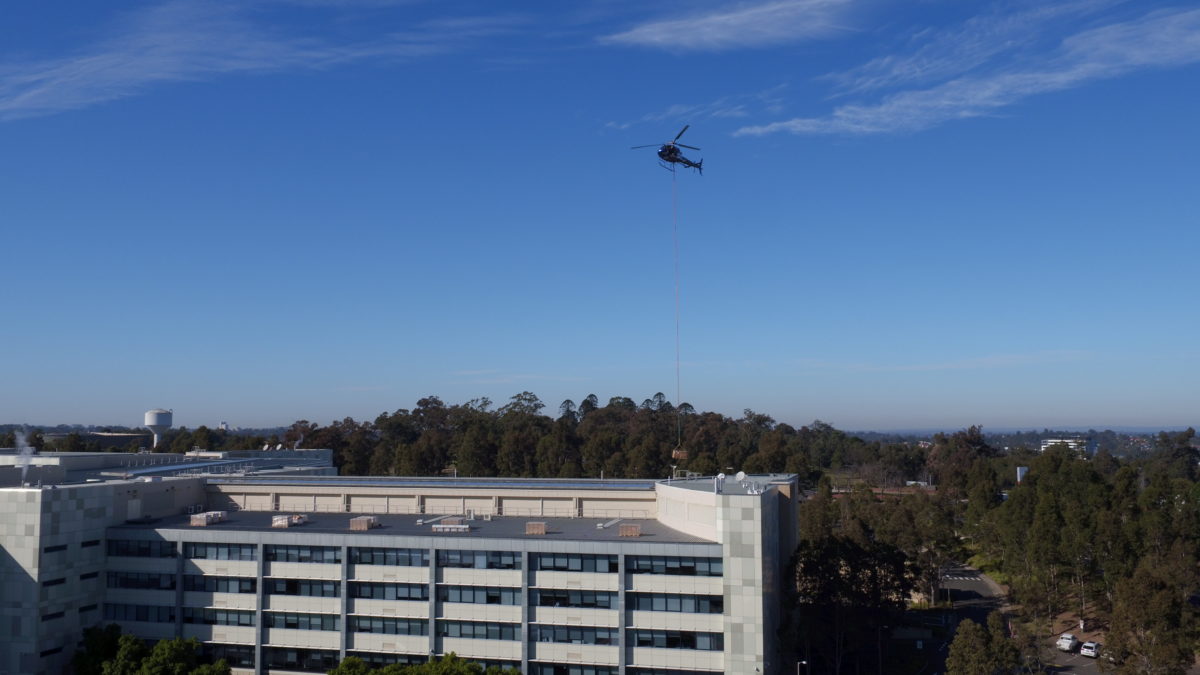In July 2020, Epho Commercial Solar (Epho) completed the seemingly impossible task of lifting solar systems on to 12 separate roofs at Woolworths headquarters with restricted crane locations and requiring extensive public road closures and manual handling. How did they do it? Well, they did what any of us would do when we’re stuck in a bind – they called in a helicopter.

Woolworths was looking to further reduce its emissions by installing a 572 kW solar system atop its massive Norwest Support Office in Bella Vista. However, Epho Managing Director Oliver Hartley told pv magazine Australia that due to the uniquely complex factors of the project, “a cost benefit analysis was made and the helicopter scenario ended up being not only competitive but also enabled the whole system to be lifted to all 12 sub roofs (and various mechanical plant decks) within the space of eight hours.” Hartley estimated the same undertaking with cranes could’ve taken more than three days, and caused “extensive traffic management (and thus increase disruption to the public and staff).”

Image: Epho Commercial Solar
Hartley and Epho now believe the use of small helicopters capable of carrying loads sub 700kg (i.e. a pallet of modules) will be used more regularly for complex installations like that of Woolworths Norwest Support Office. Without thinking outside the box, such complex installations may have been binned in the past, but now it has been shown that there is a viable option.
Of course, just because helicopters can be used, doesn’t mean they should be used excessively. After all, Aussie hero Eric Bana is too busy to be rescuing solar installers from Black Hawk Down situations every five minutes.

Airlifting modules, Hartley stressed, is reserved for special cases, if only because they bring their own raft of challenges, “for instance the buildings need to be entirely vacated which may not be easily achievable in some cases. For simple projects (single roof with suitable access), scissor lifts or mobile cranes are likely to remain the mainstream preferred installation methodology for solar projects.”
This said, helicopters are helpful. Installation time is drastically reduced, and because the equipment is lifted to exactly where it needs to be, manual handling is reduced and therefore worker safety increased.
The idea came to Epho’s development team from seeing helicopters being used to lift large air-conditioning units atop shopping centres. Financially the option made sense, a bonus because the helicopter option was really the only viable route. However, because no alternative was available, no detailed emissions budget analysis was done.
So while Epho cannot say whether eight hours of helicopter use produces more emissions than several days of cranes, pains, and automobiles, it can be said that helicopter use means more solar can be installed – the only effective emissions reduction in the long term.
This content is protected by copyright and may not be reused. If you want to cooperate with us and would like to reuse some of our content, please contact: editors@pv-magazine.com.









1 comment
By submitting this form you agree to pv magazine using your data for the purposes of publishing your comment.
Your personal data will only be disclosed or otherwise transmitted to third parties for the purposes of spam filtering or if this is necessary for technical maintenance of the website. Any other transfer to third parties will not take place unless this is justified on the basis of applicable data protection regulations or if pv magazine is legally obliged to do so.
You may revoke this consent at any time with effect for the future, in which case your personal data will be deleted immediately. Otherwise, your data will be deleted if pv magazine has processed your request or the purpose of data storage is fulfilled.
Further information on data privacy can be found in our Data Protection Policy.